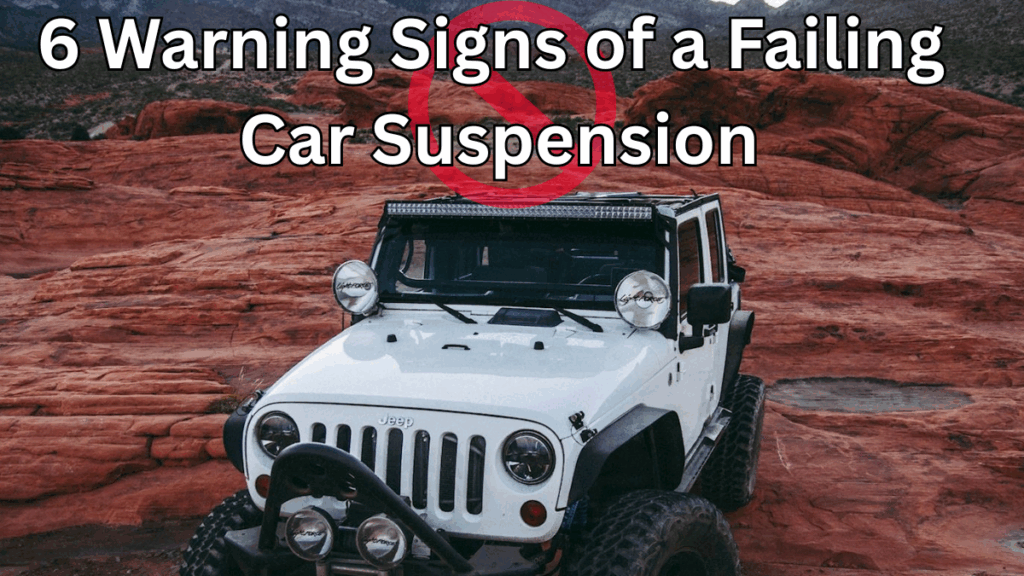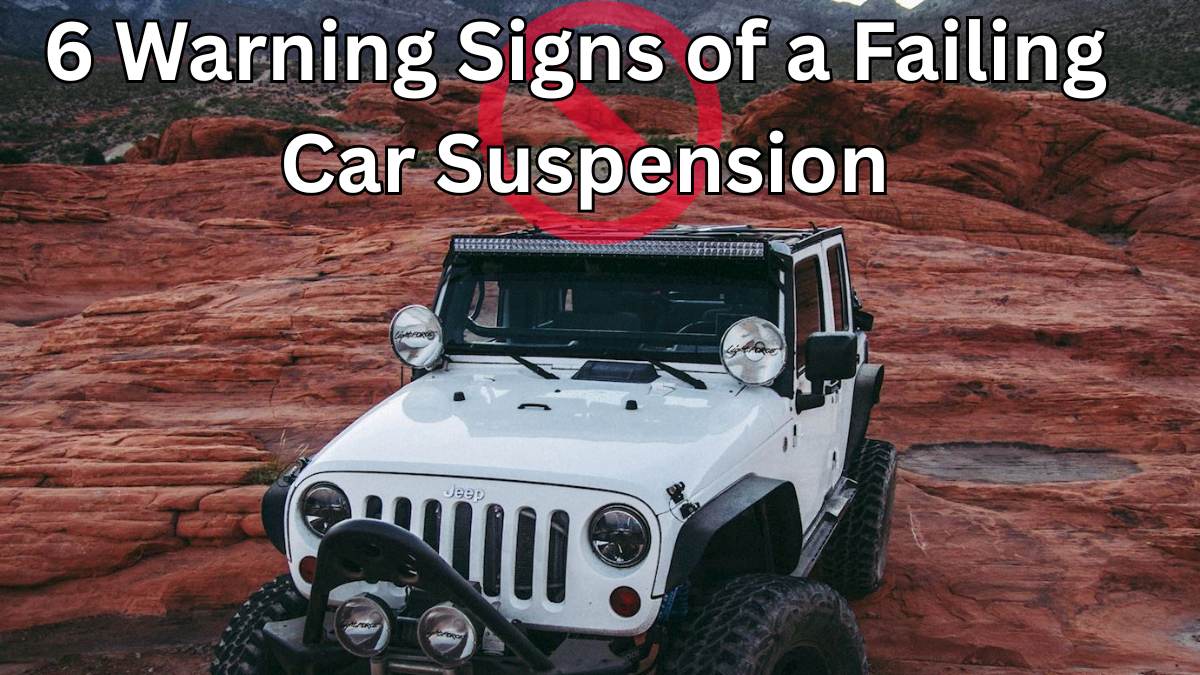Your car’s suspension system does a lot more than just smooth out your ride—it also helps maintain control, especially when turning or braking. If you’ve been noticing your car handling a little differently, you may be dealing with suspension issues. Identifying the early signs of a bad car suspension can save you from bigger, more expensive problems down the road.
Here are six telltale signs that your car suspension could be on its last legs.

1. Your Ride Feels Extra Bumpy
If your everyday drive suddenly feels more like an off-road adventure, your suspension may be to blame. A rough or bouncy ride is one of the first bumpy ride problems you’ll notice.
Watch for:
-
Excessive bouncing after going over speed bumps
-
Feeling every dip or crack in the road
-
Vibrations while driving at moderate speeds
2. Drifting or Pulling During Turns
Do you feel your car drifting to one side during turns, even if you’re steering straight? That’s a red flag.
Possible causes:
-
Worn-out shocks or struts
-
Uneven tire pressure
-
Broken suspension components
These suspension issues affect your car’s balance and can increase your risk of rollover accidents.
3. Nose Dives When Braking
If your car dips forward when you hit the brakes, your suspension isn’t absorbing the force properly.
Look out for:
-
Front end dips sharply during sudden stops
-
Longer braking distances
-
Increased stopping time, especially in emergencies
This is a key sign of a bad car suspension and should be checked immediately.
4. Uneven Tire Wear
If one tire is more worn out than the others, your suspension could be unevenly distributing weight.
| Tire Area | Wear Pattern | Possible Cause |
|---|---|---|
| Inside or Outside Edge | One-side wear | Misalignment or bad camber |
| Center Only | Bulge-like wear | Overinflated tires |
| Scattered Patches | Cupping or scalloping | Faulty shock absorbers or struts |
Routine inspections can help catch these suspension issues early.
5. One Side Sits Lower Than the Other
Parked on a level surface but your car seems lopsided? It’s probably not your imagination.
Common reasons:
-
Broken or worn-out spring
-
Uneven shocks
-
Damaged suspension arm
Test this by pushing down on the front or rear of the car. If it rebounds unevenly or creaks, that’s another sign of a bad car suspension.
6. Oily or Damaged Shocks
Take a peek under your vehicle. If you see greasy, leaking shocks or struts, they may be blown.
Symptoms include:
-
Fluid around suspension components
-
Greasy stains on wheels or frame
-
Reduced handling and increased bounce
Leaking fluid is a strong indicator that your suspension system needs immediate attention.
Quick Recap: Common Signs Your Suspension Needs Help
| Warning Sign | What It Means |
|---|---|
| Rough, bouncy ride | Worn shocks or struts |
| Car drifts when turning | Weak suspension or broken parts |
| Nose dives when braking | Bad shocks not absorbing impact |
| Uneven tire wear | Misalignment or bad suspension balance |
| One side lower than other | Broken spring or suspension component |
| Leaking suspension parts | Damaged shocks or struts |
When to See a Mechanic?
If you notice any of these symptoms, don’t wait for the issue to worsen. Ignoring bumpy ride problems could compromise your safety and lead to more expensive repairs.
Pro Tip: Regular Inspections Matter
Schedule a suspension check at least once a year or every 12,000 miles. Early detection of signs of a bad car suspension can extend the life of your car and keep you safe on the road.
Frequently Asked Questions (FAQs)
Q1. How long does a car suspension system last?
A: Most suspension systems can last between 50,000 to 100,000 miles, depending on your driving habits and road conditions.
Q2. Is it safe to drive with suspension issues?
A: It’s not recommended. Suspension issues can affect your control of the vehicle, making driving unsafe—especially at high speeds or during emergency stops.
Q3. Can I fix suspension problems myself?
A: Some minor issues like checking tire pressure or tightening loose bolts may be manageable, but most suspension repairs require professional tools and expertise.
Q4. What happens if I ignore bumpy ride problems?
A: Ignoring bumpy ride problems can lead to uneven tire wear, poor braking, reduced steering control, and potentially dangerous accidents.
Click here to learn more
